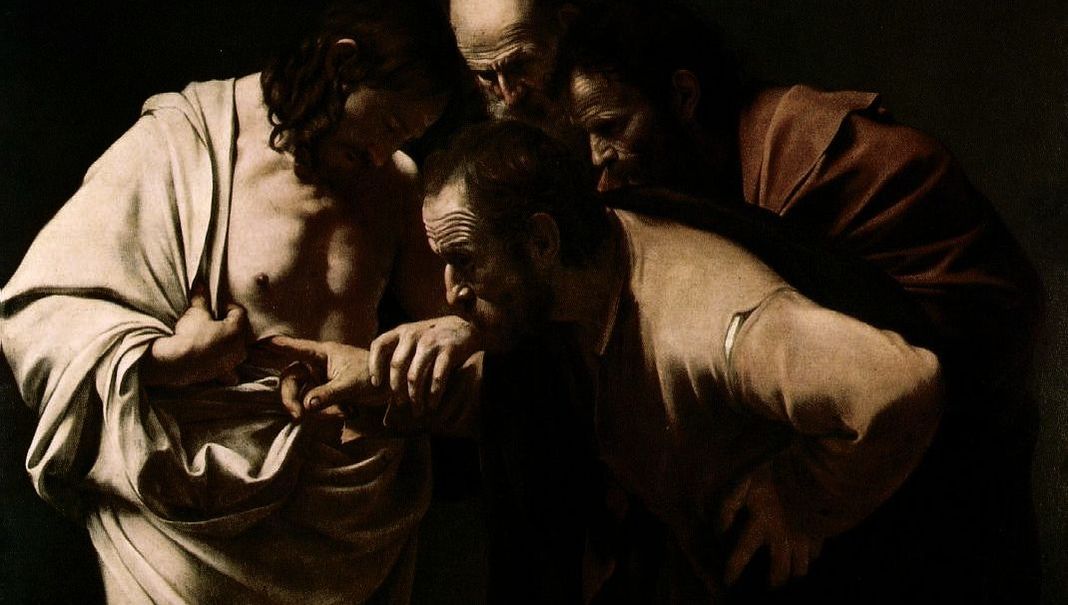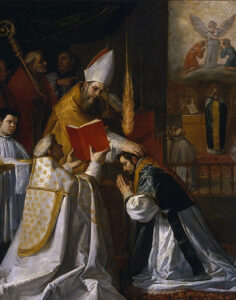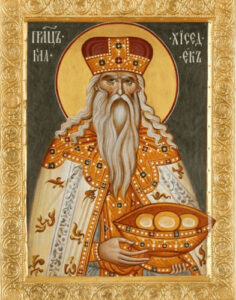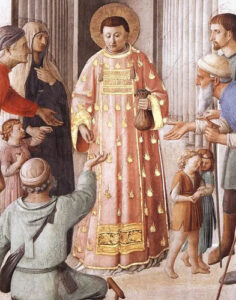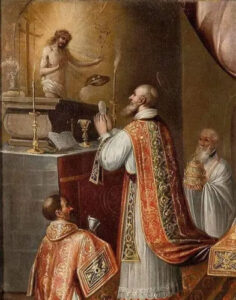Fr. Nathaniel Dreyer, IVE
Feast of St. Thomas the Apostle
Today we celebrate the feast of Saint Thomas the Apostle. It’s easy to reduce the Apostle just to his doubting, but in the few brief statements that Thomas makes before Christ’s passion, we see a man who is very down to earth, and calls things like he sees them.
For instance, in John’s Gospel, after Lazarus dies, the Apostles try to deter Jesus from heading back to Judea, since the Jews want to kill Him.
Of course, Jesus decides to return, and Thomas says, “Let us also go to die with him” (11:16). Rather pessimistically, he foresees the consequences, but accepts them. Likewise, during the Last Supper, after Jesus tells the Apostles that He will prepare a place for them, and that they know the way, Thomas interjects: “Master, we do not know where you are going; how can we know the way?” (14:5). Thomas isn’t afraid to question and get straight to the point.
This leads us to today’s Gospel, and here we can meditate on two points. First, say what you will about Thomas’s doubting, but part of the beauty of his actions, his foresight and his blunt questioning, is that it shows that Thomas isn’t willing to accept any substitutions or to compromise; he wants a Savior with wounds. Either Jesus really rose from the dead, or He didn’t, and this is something Thomas needs to be absolutely certain of. That response gets to the heart of our faith. In the First letter to the Corinthians, Saint Paul puts the dilemma this way: “if Christ has not been raised, your faith is vain . . . [and] we are the most pitiable people of all” (1 Cor 15: 17-19). On this point, there is no room for negotiating or maybes. Thomas isn’t willing to compromise, because everything hinges on this point. We, too, need to ask ourselves about how firmly we hold to hope of the Resurrection.
The second point is much more subtle and easy to overlook: we can often pass over the fact when Jesus rose from the dead, His glorified body still bore the wounds in His hands, feet, and side. Given that Christ doesn’t have the markings of the scourging, or the wounds from the crown of thorns, we could infer that He didn’t have to display those wounds on His resurrected body. Yet, Saint Thomas Aquinas gives five reasons why it’s fitting for Christ to retain those wounds (cf. ST, III, q. 54, a. 4), of which we can mention just three: first, for Christ’s own glory. As Saint Bede says, He kept His scars not from inability to heal them, “but to wear them as an everlasting trophy of His victory.” Those wounds, which would otherwise be an embarrassment to us, a reminder of the worst crime humankind has ever committed, become a trophy, a battle scar. Also, He wears those wounds as an instrument, so “that when He pleads for us with the Father, He may always show the manner of death He endured for us.” We can think of the passage from Isaiah (49:16): “See, on the palms of my hands I have written your name,” and He shows those palms to the Father, begging for mercy. Third, He bears those wounds so “that He may convince those redeemed in His blood, how mercifully they have been helped.” It is a constant reminder of His mercy for us. In short, “the wounds have been transformed from being a fruit of hatred, anger, or indifference . . . into being a witness of the depth of God’s love for each one of us. The wounds that once caused an excruciating and humiliating death are now the badges of the final victory over sin and death.”[1]
We could say that Christ’s wounds are an essential part of His glorified body, and that Thomas was right to insist on wanting to see them. The story is told that Saint Martin of Tours once seemed to have an apparition of Christ. The figure, clothed in royal attire, told the saint to worship him, but Martin hesitated. The figure questioned him, and Martin, realizing what was happening, remarked when Christ comes, He would openly show the wounds on His hands and feet. At that, the figure changed, and the devil was forced to reveal himself, vanishing and leaving a terrible stench. A Christ without wounds is no Christ whatsoever. For that reason, is it any wonder, then, that Jesus repeatedly told Saint Faustina: “When it seems to you that your suffering exceeds your strength, contemplate My wounds” (Diary 1184, 1512)? “When it seems to you that your suffering exceeds your strength, contemplate My wounds.” There we find the source of love, strength, joy, and faith.
Let us pray, through the intercession of Mary, Queen of Apostles, and Saint Thomas, for the grace to truly believe in the love the Risen Christ has for us, and to hide ourselves deep in His wounds.
[1] FAITH magazine, June 2017, 13.

